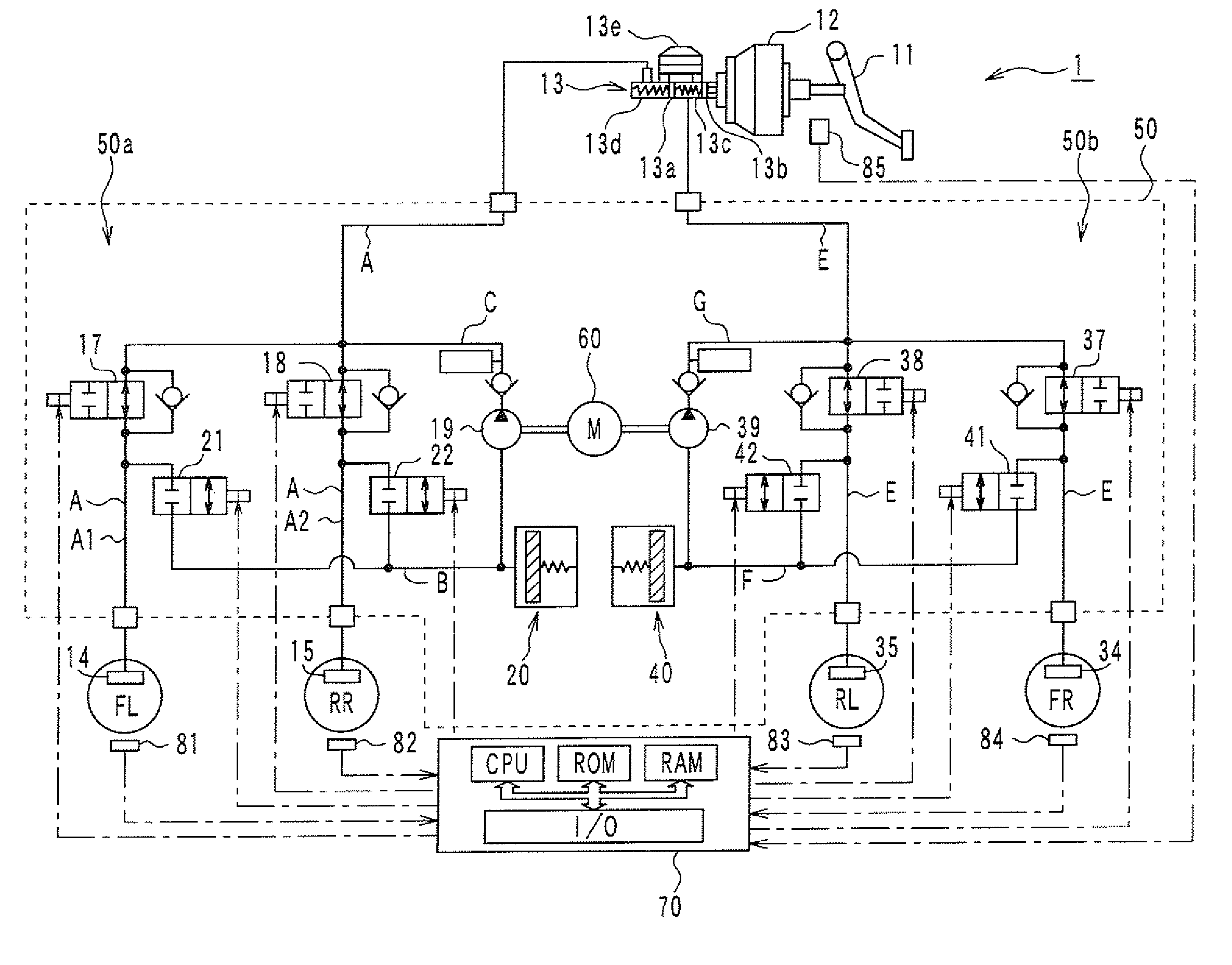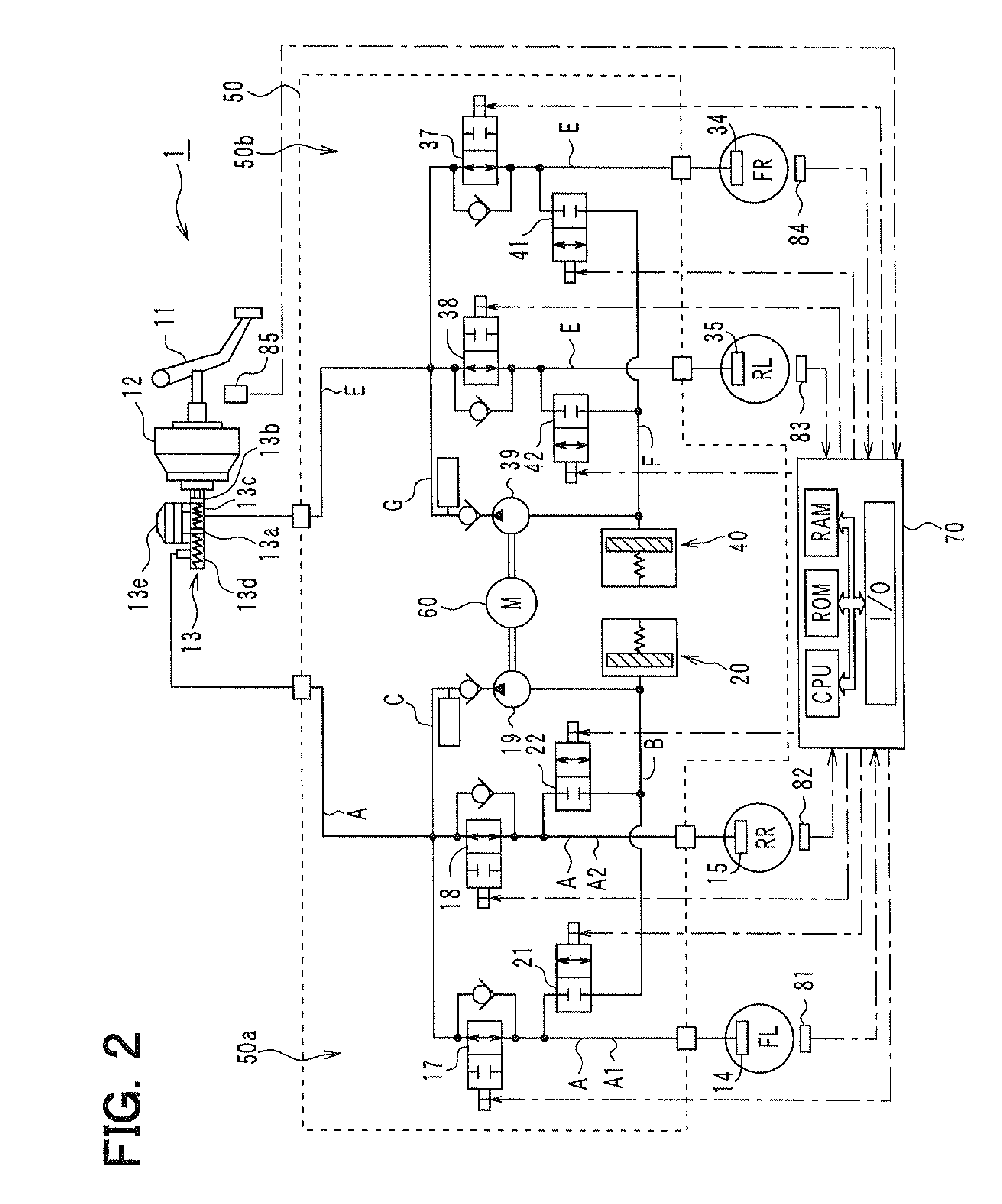Brake control apparatus
- Summary
- Abstract
- Description
- Claims
- Application Information
AI Technical Summary
Benefits of technology
Problems solved by technology
Method used
Image
Examples
first embodiment
[0056]A first embodiment of the present invention will be explained. FIG. 1 shows a block diagram for a brake control apparatus 1 according to the present embodiment.
[0057]The brake control apparatus 1 according to the present embodiment will be explained. As shown in FIG. 1, the brake control apparatus 1 has a brake pedal 11, a brake booster 12, a master cylinder (M / C) 13, wheel cylinders (W / C) 14, 15, 34 and 35, and a hydraulic brake actuator 50 for controlling brake fluid pressure. The brake control apparatus 1 has a brake control ECU 70 for controlling a braking force generated by the brake control apparatus 1. More exactly, the brake control apparatus 1 has wheel speed sensors 81 to 84 respectively provided for each wheel (FL, FR, RL, RR) and outputting a detecting signal (pulse signal) depending on a wheel speed. The detecting signals from those wheel sensors 81 to 84 as well as detecting signals from other sensors (explained below) are inputted to the brake control ECU 70, so...
second embodiment
[0185]A second embodiment of the present invention will be explained. A braking operation of the second embodiment is different from that of the first embodiment. Other structure and operation are the same to those of the first embodiment. Different portions from the first embodiment will be explained.
[0186]According to the present embodiment, the braking operation will be carried out by use of the brake control apparatus 1 and an operation for EBD (Electronic Brake force Distribution) control is carried out for adjusting distribution of the braking forces between front and rear wheels. A structure of the brake control apparatus 1 is the same to that of the first embodiment. An operation to be carried out by the brake ECU 70 is different from the first embodiment. Hereinafter, the operation for the EBD control will be explained.
[0187]According to the EBD control, the braking force for the rear wheels is controlled depending on a difference of wheel speeds (a wheel speed difference) ...
PUM
 Login to View More
Login to View More Abstract
Description
Claims
Application Information
 Login to View More
Login to View More - R&D
- Intellectual Property
- Life Sciences
- Materials
- Tech Scout
- Unparalleled Data Quality
- Higher Quality Content
- 60% Fewer Hallucinations
Browse by: Latest US Patents, China's latest patents, Technical Efficacy Thesaurus, Application Domain, Technology Topic, Popular Technical Reports.
© 2025 PatSnap. All rights reserved.Legal|Privacy policy|Modern Slavery Act Transparency Statement|Sitemap|About US| Contact US: help@patsnap.com



